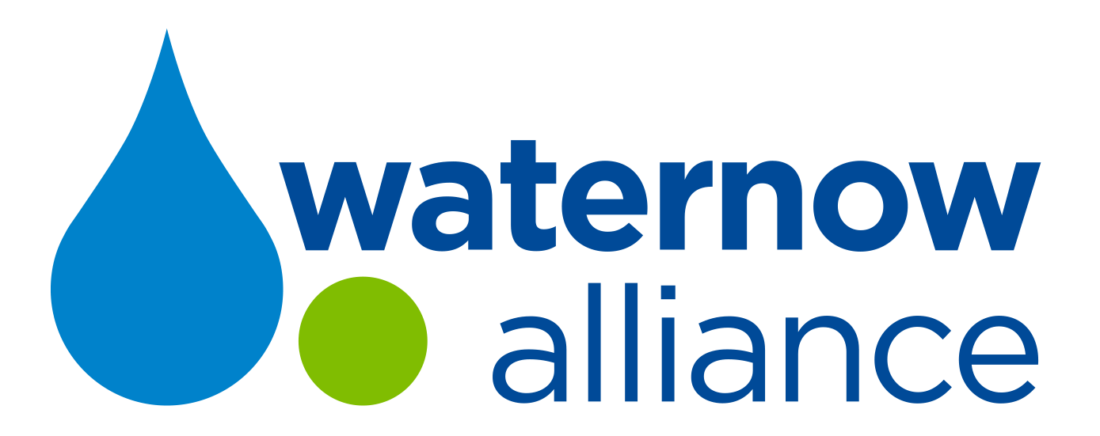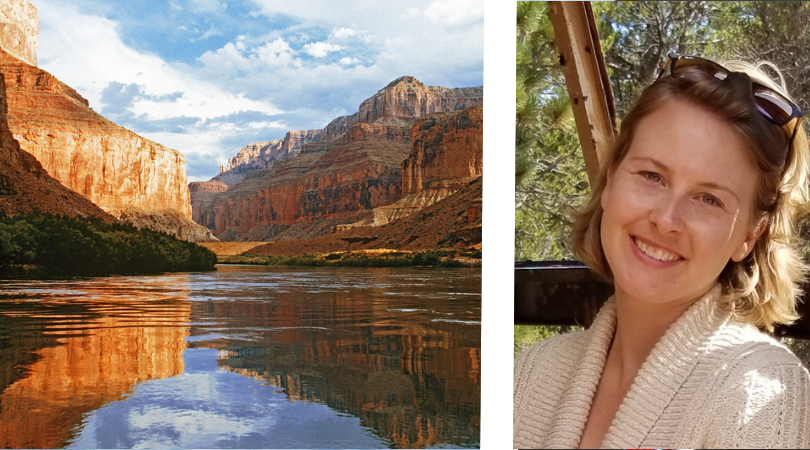Kate Moran joined the WaterNow team this month as our Member Engagement Manager. The Member Engagement Manager is a new position tasked with connecting more directly with WaterNow Members and providing them with the support and resources they need to advance sustainable water resources in their communities. Kate has over ten years of experience in environmental planning and management with a focus on the Clean Water Act, Endangered Species Act, National Environmental Policy Act (NEPA), and other federal, state, and local regulations. She has a M.S. in Water Resources Policy and Management from Oregon State University and a B.S. in Geography from University of Oregon.
What led you to pursue a career in sustainable resource management?
As a child I was always fascinated by geology and geomorphology. While at the University of Oregon, I took a geography course that altered my area of study. The course focused on resource conflicts that exist between society and our natural environment. I was hooked after this course. My career and volunteer work have been focused on how, as a society, do we thrive and implement equity, while still preserving, conserving, and restoring our environmental resources for future generations?
Prior to joining WaterNow, you had the opportunity to manage an urban watershed group in Colorado focused on meeting the beneficial uses and water quality standards in the Basin. What are the benefits of sustainably managing our watersheds and what advice do you have for doing so?
I was lucky enough to learn from and work with a wide-range of invested, expert stakeholders in the basin including: land use and stormwater practitioners, water suppliers, wastewater treatment managers, regulators, and non-profits all working together to protect the beneficial uses in the basin. These local experts utilized site-specific restoration projects to basin-wide land and water polices, with the support of elected officials, to work towards a more resilient water future and to protect the basin’s beneficial uses.
Managing our watersheds in face of increasing uncertainty in both water quantity and quality, requires us to re-think old practices. Given these mounting water challenges, if we diversify and invest in multiple solutions, including nature-based infrastructure, we can build a more resilient, sustainable system. My advice for managing watersheds or any resource sector, is to collaborate among invested stakeholders in order to develop innovative solutions in how we regulate our watersheds and the technology we utilize to do this. Our water future is dependent on implementing multiple water solutions and sharing these success stories with other water leaders to adopt in other regions.
As WaterNow’s Member Engagement Manager, in what ways will you be supporting WaterNow members?
I have been lucky enough to live in the Midwest, East Coast, South, Southwest, Pacific Northwest, and now the San Francisco Bay Area. Nationally, we are all struggling to keep head of aging infrastructure and meeting water quality standards and/or water supply demand gap. Each region has its own unique set of challenges; however, across the nation water utilities and elected officials are stepping forward to tackle these challenges head-on in new, sustainable, innovative ways.
In my role as WaterNow’s Member Engagement Manager, I will support each member by connecting them to the resources and experts they need to tackle their unique, local water challenges. In addition, WaterNow provides opportunities for members to share, network, and teach one another how challenges were overcome in their communities. Knowledge sharing is critical to plan and implement sustainable, resilient water solutions.
Which of WaterNow’s current projects and initiatives excites you the most? Why?
WaterNow’s Tap into Resilience campaign empowers water leaders to unlock capital financing for on-site water infrastructure and supports utilities nationwide to scale up their distributed infrastructure programs. Communities across the nation are grappling with the challenges of aging water infrastructure, regional supply concerns, and a lack of funding to adequately address these issues. Tap into Resilience provides leaders with the tools to scale utility investment and to responsibly work towards addressing these growing challenges. You can learn more about the campaign here.
What’s one thing that WaterNow Members could do today to jumpstart their involvement in the Alliance?
Register today to join us at the WaterNow Alliance 4th Annual Summit! This year’s summit will be held in Austin, Texas from March 27-28. We’ll be diving into topics ranging from water equity and affordability to stormwater management to innovative financing opportunities. And of course, we’ll discuss the on-ramps created by WNA’s Tap into Resilience campaign. I hope to see you there.
If you had to choose just one innovative water solution to really take off in the US and beyond, what would it be?
There is no single solution or innovation to address our myriad water challenges including, but not limited to: aging infrastructure, the water supply/demand gap, protecting water quality, and creating a resilient water system in the US and beyond. The one thing we all would benefit from is accepting we can no longer continue with business as usual in how we regulate and manage water. The solutions that worked for us in the past, will not be sufficient in addressing our current and future challenges. We must incorporate new technology and increase localized, green infrastructure into one cohesive integrated water management approach.

